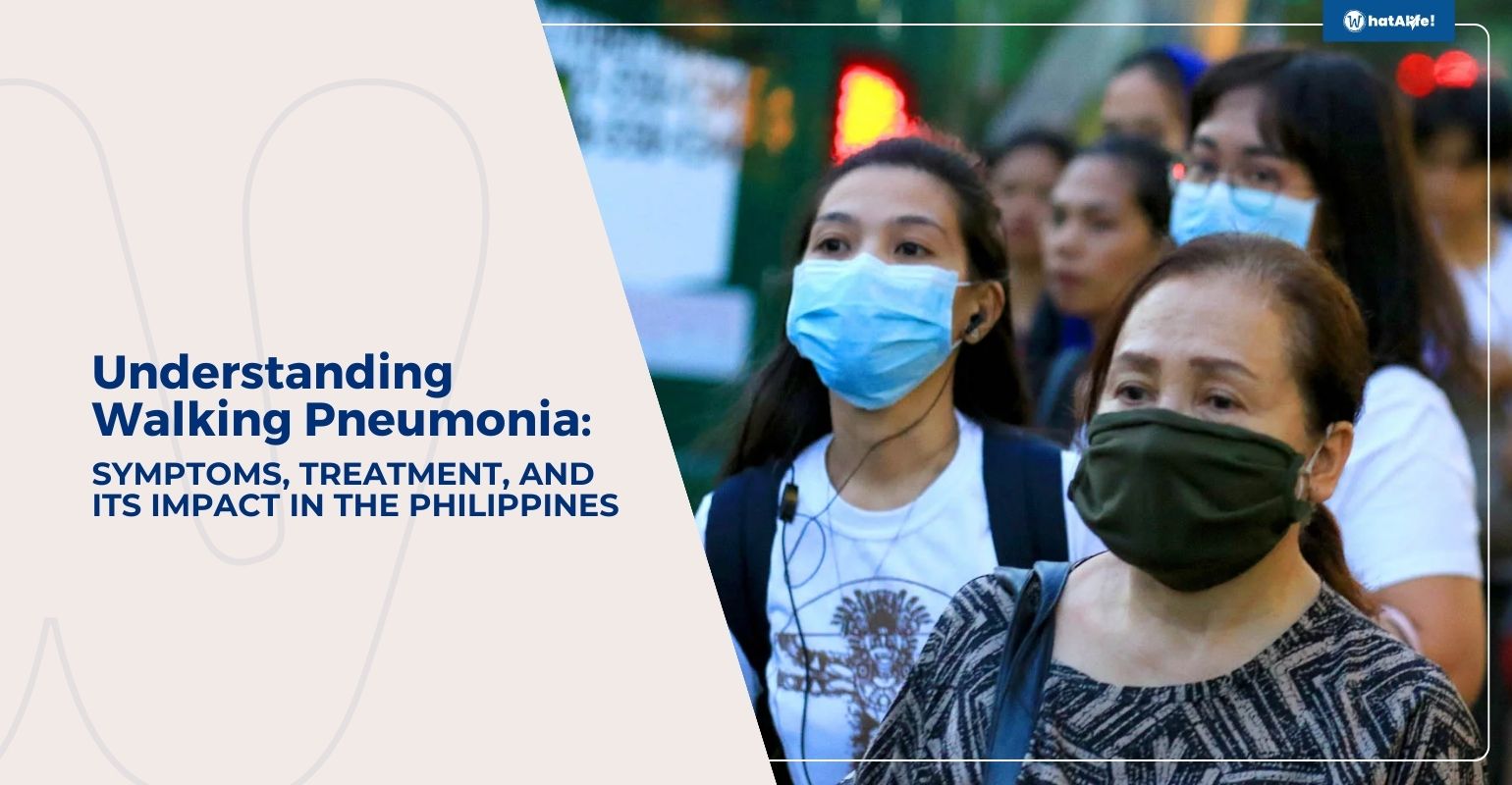Walking pneumonia is a non-medical term for a mild case of pneumonia, known as atypical pneumonia in medical terminology. The term “walking pneumonia” may sound ominous, but what exactly does it mean? What are the symptoms of walking pneumonia? Does it indicate a more severe disease? This article will explore its symptoms, how it is dealt with in the Philippines, and the role of the Department of Health in managing such cases.
Table of contents
Understanding Walking Pneumonia
According to the Cleveland Clinic, pneumonia is a lung infection that is characterized by air sacs filled with mucus and other fluids, a cough with mucus and a high fever.
In the case of walking pneumonia, you might feel well enough to carry out your daily activities without realizing you have pneumonia, hence the term “walking.”
Walking pneumonia is a mild case of pneumonia and it usually does not require bed rest or hospitalization.
The World Health Organization (WHO) identifies walking pneumonia (Mycoplasma pneumoniae) as a common bacterial infection usually affecting younger children. The Centers for Disease Control and Prevention states that it is treated with antibiotics.
Symptoms of Walking Pneumonia
Mayo Clinic listed the following symptoms of walking pneumonia:
- Cough
- Fever
- Sore throat
- Headache
- Runny nose
- Ear pain
- Chest pain from coughing
It’s important to note that walking pneumonia resembles a severe cold and is often accompanied by symptoms such as a cough, chest pain, headache, fever, and mild chills. Although it’s a milder form of pneumonia, self-care is crucial for recovery.
Walking Pneumonia in the Philippines
The Department of Health (DOH) reported that four cases of walking pneumonia have been recorded in the Philippines from January to November, but all of these patients have recovered from the infection.
The said cases were not new. They have been detected among those patients who got infected with influenza-like illness (ILI).
DOH noted that these cases were reported during morbidity weeks 3, 30, 37, and 38, with one case each week. Currently, surveillance is focused solely on ILI cases.
Walking Pneumonia and the Department of Health (DOH)
As stated in DOH’s official website, the Department of Health is tasked with ensuring all Filipinos have access to basic public health services. This is achieved through the provision of quality health care and the regulation of health goods and services providers.
DOH is advising the public to practice minimum health standards like washing of hands to prevent respiratory infections from spreading further. Social distancing and wearing of face masks is also encouraged, especially among the vulnerable and those who have coughs and colds. Getting vaccinated against pneumonia is also strongly recommended, especially for those at a higher risk, such as the elderly and those with chronic illnesses.
Is Walking Pneumonia Dangerous?
Although it is considered mild, walking pneumonia can still be dangerous, according to News Medical Life Sciences. If left untreated, one in three cases of walking pneumonia can move into full-blown pneumonia at a later stage.
Therefore, it’s important to monitor symptoms that last beyond three to five days. Seek medical treatment to rule out other illnesses, instead of risking complications later due to negligence.
Conclusion
Walking pneumonia is a milder form of pneumonia that often allows people to continue their daily activities. However, it is not to be taken lightly. Despite its seemingly less severe nature, it can lead to full-blown pneumonia if left untreated.
Hence, it’s vital to pay attention to persistent symptoms and seek medical help. Preventive measures, such as vaccination, good hygiene, and social distancing, are highly recommended. The role of health organizations is also crucial in managing and controlling its spread.
Source: (1),(2),(3),(4),(5),(6),(7)
Also Read: GUIDE: Nationwide Simultaneous Earthquake Drill 2023

Leave a Reply